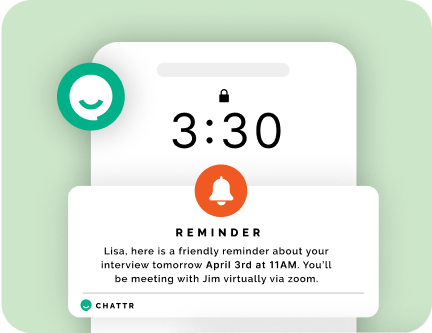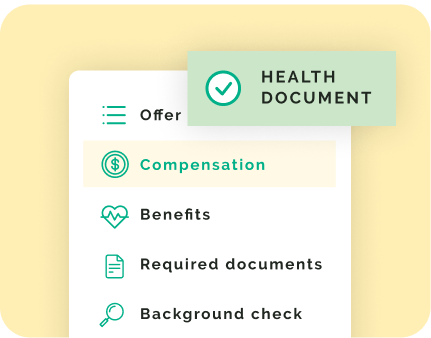Getting creative with outreach tactics beyond traditional channels reveals overlooked talent pools and diversifies your workforce. Explore local partnerships, digital platforms, events, incentives, high school programs, and more to uncover hidden gems.
Partner with Local Nonprofits and Community Organizations
Connect with nonprofits and community organizations helping underemployed populations like refugees, veterans, differently-abled individuals, at-risk youth, justice-impacted individuals, and more. Meet with groups to pitch, providing job training and placement support as an additional service for their members. Offer to host info sessions or site visits to increase awareness of your openings.
Co-develop training curriculums combining general workplace readiness with role-specific skills needed for open positions. Fund wages for nonprofit participants during multi-week training programs through grants. Create pipelines for continuing employment within your organization for graduates showing commitment and excellence.
Nonprofits can help qualify, screen, train, and mentor candidates from demographics you likely won’t reach through traditional recruiting. Tapping into these networks is a win-win – you gain access to motivated and loyal talent while making a positive community impact. According to nonprofit leaders, participants in these programs often make highly engaged long-term employees.
Leverage Online Gig Platforms
Post short-term or hourly contract roles on online gig platforms like Fiverr, Upwork, Freelancer, and Guru. Screen independent contractors by engaging them for small fixed-price pilot gigs first. Review portfolios, profiles, past projects, and ratings for required skills before assigning trial projects. Clearly outline expectations, project scopes, pricing, and timelines upfront through a well-defined statement of work. Monitor work quality, communication, timeliness, and professionalism throughout pilot engagements.
Use these low-risk trial gigs to effectively test-drive talent before making longer-term commitments. Look for standouts who consistently meet or exceed expectations and fit with your culture. Offer expanded project opportunities to top performers to deepen your assessment. Eventually, transition those excelling into part-time or full-time roles if mutual fit and interest exist.
Online gig platforms grant access to expansive on-demand talent pools ready to work on projects. You’ll find experienced professionals in marketing services across areas like graphic design, writing, administrative work, software development, data entry, and more. Leverage these networks to rapidly prototype and fill hourly needs with flexibility. The pay-as-you-go model allows easy scaling up or down as business demands change.
Advertise at Diverse Community Events
Get exposure to broad local audiences by sponsoring and advertising at events completely unrelated to your industry. Look for cultural festivals, street fairs, music concerts, sporting events, special interest gatherings, and similar happenings that attract large crowds. Rent booth space in high-traffic areas when possible. You want visibility even if it is not endemic to your field.
Engage passing attendees through interactive elements like prize wheels, contests, giveaways, free samples, activities, and demonstrations. These help draw groups over to learn more about your company. Have knowledgeable team members staff the booth to answer questions, discuss job openings, and share employer information.
Collect contact info through lead generation activities for future nurturing and recruitment marketing. Send follow-ups to drive interested attendees to apply. Go beyond just having a basic job board at your booth – make it engaging and memorable. Pair event promotion with digital advertising to further spread the word.
This unconventional tactic gets the word out about open positions to more diverse talent pools beyond your traditional candidate pipeline. Connecting with the local community in fun public settings also builds general goodwill and brand awareness.
Gamify the Application Process
Incorporate brief, engaging games into your application flow that interactively assess relevant skills. The games put candidates at ease while revealing capabilities beyond claims on a resume.
Some examples:
– A fast-paced typing speed test game to screen administrative assistants
– An ordering simulation where cook applicants must quickly prepare mocked-up virtual food tickets
– A multitasking challenge where candidates toggle between systems, tackling calls, emails, and chats
– A troubleshooting game presenting equipment/technology issues for maintenance roles
– A dynamic Q&A quiz assessing job-related knowledge
Games bring some welcome engagement to otherwise tedious applications. But beware of over-gamifying – job seekers also expect some traditional evaluation touchpoints before hiring. Use games as supplements to balance candidate experience with insightful screening.
Before implementing any games, carefully review your current application process for bias risks. Eliminate any discriminatory barriers in qualifiers, language, or steps before layering on games. Vet game concepts with diverse team members to identify issues.
Keep games brief, playable on mobile, and related to real on-the-job scenarios. Tell candidates upfront how games factor into selection so expectations are clear.
Share practice rounds to reduce anxiety. Enable redos if applicants desire to improve their scores. Games can reveal problem-solving skills, work styles, and job fit beyond resumes alone if thoughtfully designed.
Hold Recruiting Raffle Drawings
Offer prize entries like gift cards, electronics, or cash as incentives for completing key recruitment milestones like submitting an application, finishing a screening, or interviewing. Promote the drawings on social media, digital ads, and unconventional platforms beyond typical job boards. Leverage the reward of prizes to get your open roles in front of wider audiences.
Highlight the value of prizes and ease of entering while keeping the focus on your employer brand and job details. For example, “Apply today for a chance to win a $500 Visa gift card!” or
“Complete a virtual interview and be entered to win Beats headphones!” This tactic incentivizes applying and advancing beyond just initial job interest alone.
Disclose official contest rules covering eligibility, entry requirements, drawing dates, prizes, and limitations to maximize legal compliance and ethical practices. Conduct randomized drawings through platforms like Rafflecopter and Woobox to select unbiased winners.
Award prizes publicly to further spread awareness. While the gamification of giveaways encourages, ensure your roles and culture remain the emphasis over sweepstakes alone.
Partner with Local High Schools and Districts
Build connections with local high schools, particularly those focused on trades, technical, and vocational programs aligned to your open positions. Offer to host onsite field trips, speak on career panels, sponsor skills clubs, participate in job fairs, or donate equipment. Provide work-based learning opportunities like job shadowing, internships, or apprenticeships. These partnerships provide exposure to motivated students about to enter the workforce. They offer a pipeline of trained talent when you help shape the skills being taught.
Conclusion
Expanding your recruiting playbook using creative outreach and unlikely talent pipelines is key to uncovering hidden gems in a competitive labor market. Take the road less traveled to diversify and future-proof your workforce.
Expanding your recruiting playbook with creative outreach and unlikely talent pipelines is key to uncovering hidden gems in a competitive labor market. Take the road less traveled to diversify and future-proof your workforce. Chattr provides an integrated recruiting platform to coordinate these multifaceted strategies and applicant engagement seamlessly.












